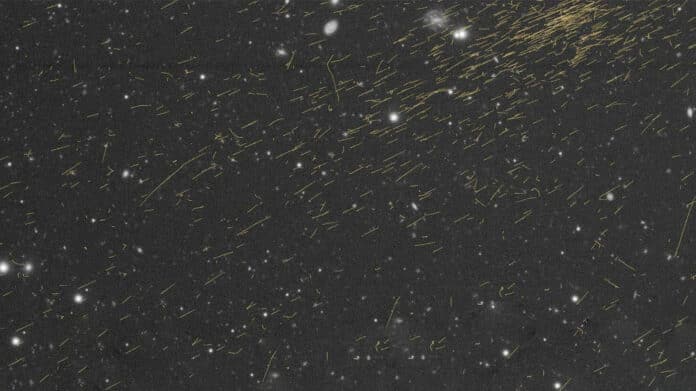The Universe produces energetic particles called cosmic rays. Most of their origin, acceleration mechanisms, and mass makeup at the highest energies remain unknown. One of the most significant issues in contemporary astrophysics is thought to be the origin of high-energy cosmic rays.
With their novel method, Osaka Metropolitan University scientists have observed cosmic-ray extensive air showers with unprecedented precision. They captured these extensive air showers with a prime-focus wide-field camera mounted on the Subaru Telescope, situated atop the Mauna Kea volcano in Hawaii.
The observational astronomy component of the Subaru Telescope’s design. Typical astronomical data processing dismisses cosmic rays, which appear as “tracks” on the recorded images and obscure the targeted stars or galaxies, as noise. The study of this group, however, focuses on that very “noise.” The research team identified 13 images with significant air showers after analyzing over 17,000 images taken between 2014 and 2020. There were far more particle trails visible in these images than typical.
Associate Professor Toshihiro Fujii from the Graduate School of Science and Nambu Yoichiro Institute of Theoretical and Experimental Physics at Osaka Metropolitan University said, “With conventional observation methods, it is challenging to distinguish between the types of particles that constitute extensive air showers. Our method, on the other hand, has the potential to determine the nature of individual particles.”
“Furthermore, by integrating our method with conventional approaches, we hope to advance our understanding of extensive air showers. This technique may allow us to search for dark matter or other exotic particles, offering additional insights into the transition of the Universe into a matter-dominated era.”
Journal Reference:
- Kawanomoto, S., Koike, M., Bradfield, F. et al. Observing cosmic-ray extensive air showers with a silicon imaging detector. Sci Rep 13, 16091 (2023). DOI: 10.1038/s41598-023-42164-4
